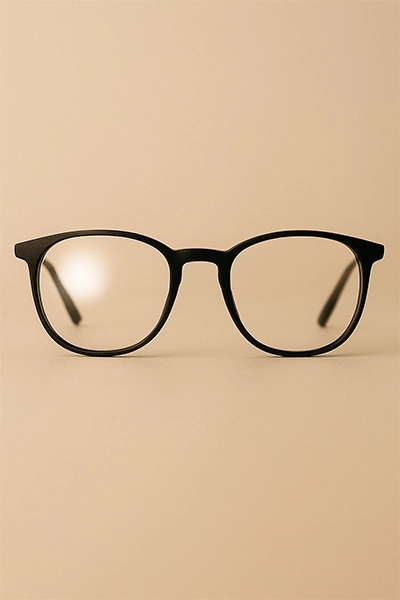
Guide to Lenses with Anti-Reflective Treatment
The anti-reflective treatment is one of the most requested and useful interventions to improve the visual quality of glasses. But what is it really? How does it work? And who really needs it? In this guide, we discover everything you need to know about anti-reflective treatment: from concrete benefits to false myths, to the best brands that incorporate it into their lenses.
What is Anti-Reflective Treatment
The anti-reflective treatment (also known as AR or anti-glare) is an invisible film applied to the surfaces of the lenses, capable of eliminating unwanted reflections and increasing the transparency of the lens itself.
It works by canceling the light reflected on the curved surfaces of the lenses, improving clarity and visual comfort.
👉 Learn more: Frequently Asked Questions about Lenses, Filters, and Treatments
What is Anti-Reflective Treatment Used For (with practical examples)
- During night driving: reduces reflections from oncoming car headlights
- In front of screens: improves readability and reduces visual fatigue
- In sunlight: avoids glare when using clear lenses
- For aesthetics: makes eyes visible through the lens, perfect for those often in videos or photos
Concrete Benefits of Anti-Reflective Lenses
| Benefits | Description |
|---|---|
| 👁🗨 Better Clarity | Clearer and brighter vision in all lighting conditions |
| 🚗 Safe Driving | Less glare from headlights and streetlights |
| 🧠 Less Fatigue | Ideal for those who work long hours in front of monitors and artificial lights |
| 📸 Cleaner Look | Eyes visible with no reflections in photos or videos |
When is it Particularly Recommended
- Those who work on computers for more than 3 hours a day
- Those who drive often, especially at night
- Students, professionals, doctors, and those working with bright lights
- Those who make video calls or create visual content
- Wearers of progressive or bifocal lenses (where clarity is essential)
👉 See also: Guide to Using Multifocal Glasses
Glasses with Anti-Reflective Treatment: Recommended Brands
Not all brands offer the same type of treatment. Here are some of the most reliable in your catalog:
- Zeiss – DuraVision Platinum and BlueProtect treatments
- Tom Ford – Excellent visual quality, already treated in many prescription collections
- Ray-Ban – Optional treatment on many prescription lenses
- Vogue Eyewear – Great value for young professionals
- Persol – Perfect for those seeking performance + artisanal style
- Lindberg – High-end, lightweight, and advanced treatments for professional use
Anti-Reflective: Yes or No? Myths to Debunk
- ❌ “It’s not needed if the lenses are clear”
Even clear lenses reflect light. The treatment improves vision in all conditions. - ❌ “It makes lenses wear out faster”
On the contrary, it also protects scratch-resistant treatments and increases their lifespan. - ❌ “It gets dirty more easily”
Only older generation AR treatments. Today, there are hydrophobic and anti-smudge versions.
How to Recognize an Anti-Reflective Lens
- Subtle green or blue reflections in backlight
- Eye visible from outside, with no “white halo”
- More transparency of the lens in enclosed environments
- Easier cleaning if the treatment is also oleophobic
👉 Optician's Advice: always ask for confirmation of the type of treatment included before purchase.
FAQ – Frequently Asked Questions
❓ Do all lenses have anti-reflective coating?
No, it is a treatment that must be requested. Some brands include it, while others offer it as an option.
❓ Can I add it after purchase?
No, it must be applied during the lens production phase.
❓ Does it last over time or does it wear off?
Modern treatments are very durable. If cleaned properly, they last for years.
❓ Can it also be applied to sunglasses?
Yes, especially on the inner side to avoid direct reflections on the retina.